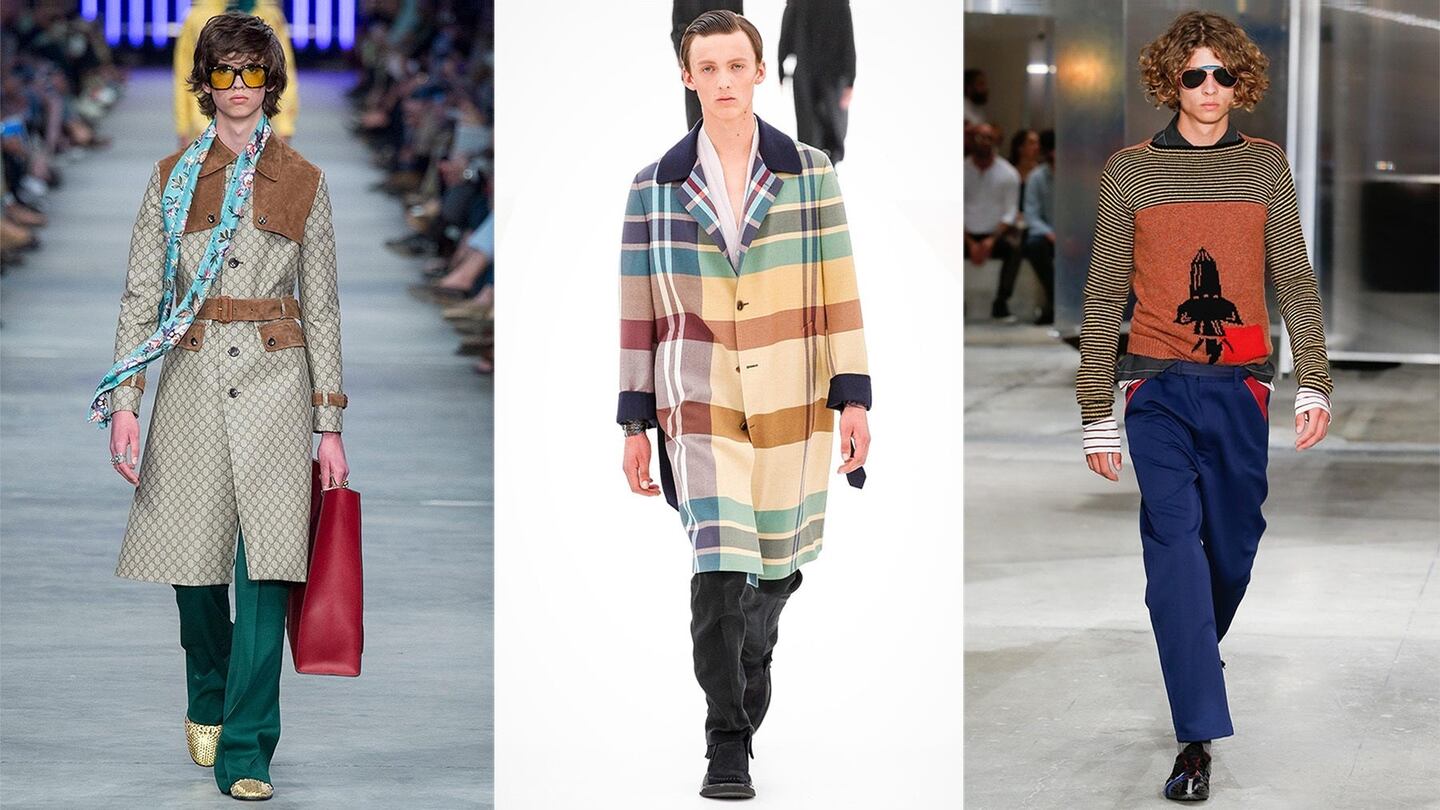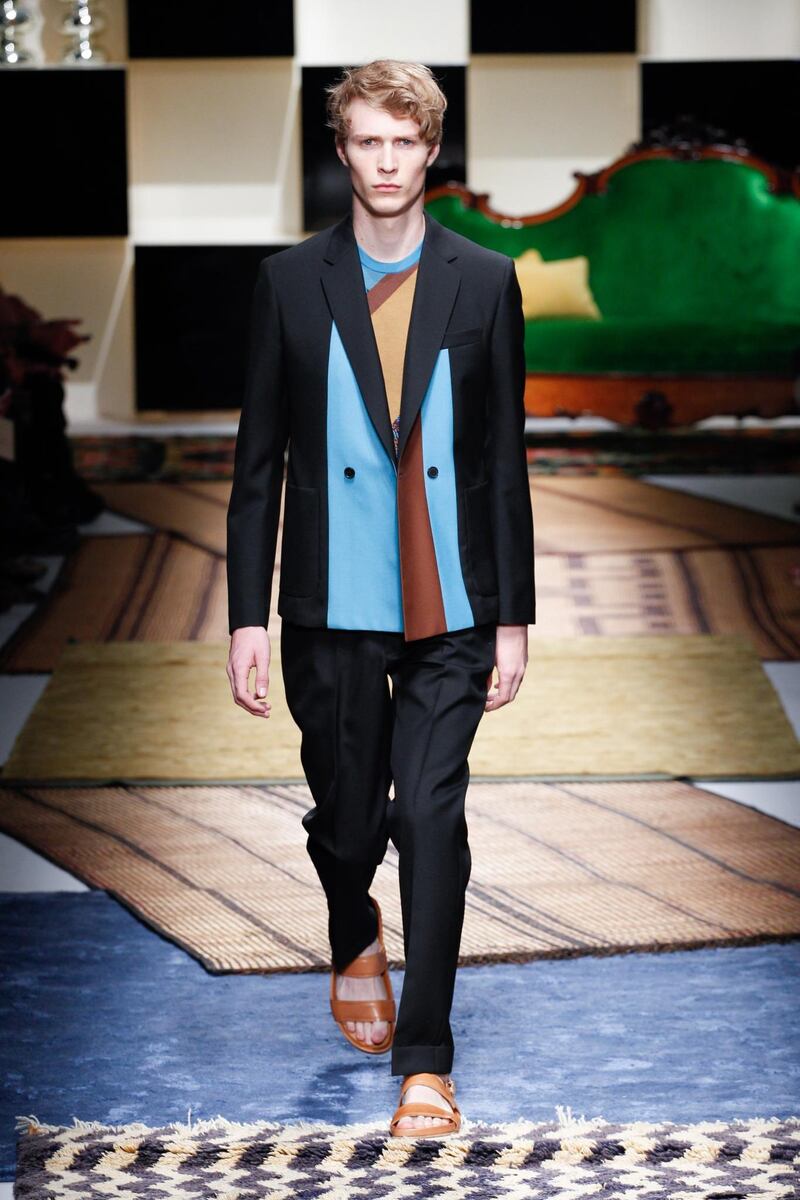
The Business of Fashion
Agenda-setting intelligence, analysis and advice for the global fashion community.

Agenda-setting intelligence, analysis and advice for the global fashion community.

MILAN, Italy — The cult of individuality is the Holy Grail of contemporary fashion and the men's fashion week that closed yesterday in Milano, offered tangible proof of this. Indeed, this was actually the only notable aspect of a round of shows which carried on smooth and fine, without any new, agenda-setting fashion statement being thrown into the global discourse.
The season was all about the me, the ego, the I. For a start, there were the words themselves. Never have personality, eccentricity and eclecticism featured so prominently on show notes, or been used so profusely by designers in backstage fashion speech. This is hardly a surprise; after all the trick is a seasoned one. Although industrially produced, contemporary fashion has always relied on the mystique of uniqueness to sell the dream and cash in on it. Digital culture, which turned fashion into just another aspect of global entertainment, elevated the phenomenon to the nth degree, while perversely igniting an unstoppable wave of conformism. There is, in fact, a devilish conundrum going on here. Fashion creates codes that are imposed onto the public as an unwritten law. In order to be à la page, one has to conform, which is the total opposite of individuality: the egotistical breaking of all pre-set rules. Yet, the dream to be one of a kind can be a primal drive in bringing customers to the shop to buy— and this is exactly the marketing tool which this past men's fashion week made apparent.

Salvatore Ferragamo S/S 2016 | Source: Indigital
The quest for the slightly eccentric, individual look was everywhere. At Salvatore Ferragamo, the goings were a lot softer and warmer than usual in what was one of Massimiliano Giornetti's best efforts so far, while at Marni everything from the Sixties to the Fifties, and from ethnic to sports, was thrown into the subtlest of mixes. At the opposite end of the spectrum, DSquared2 was another case in point, with its blatantly muscular celebration of the sleazy, uber-cool laissez-faire of surfers and skaters. In other collections, outfits were lined up in haphazard, seemingly random ways with no real sense of succession from one look to the other. What counted, in other words, was not the storytelling of the clothes per se, but the idea that every model was a character.
ADVERTISEMENT
The cult of egocentrism, in fashion terms, can be a wonderful escape: a way to find a certain coherence in the form of deliberate non-coherence: collections that are put together with no real plan but brutal, soulless merchandising. It is quick and effective, but most of all it brings to the fore what truly counts today: style.
We have entered a wholly new era of fashion design: a post-postmodern age in which what's pivotal is the way items are assembled, not the way pieces are designed. The most influential inventors working today, Miuccia Prada in primis, are not, in this respect, creators of radically new things, but heralds of a different, more personal ways of wearing things.
<span id="2068"><a bof-track="" class="kws_link imp clk profile_id_2068" content="The surprise choice for Gucci creative director re-energised the historic house in a matter of months." data-e="profile.link" data-id="2068" href="http://www.businessoffashion.com/community/people/alessandro-michele" img="profiles/asset/2068/35dcea9de565033d0543283017c561884b444813.jpeg" profile-popover="" subtitle="Creative Director, Gucci" title="Alessandro Michele">Alessandro Michele</a></span> and <span id="307"><a bof-track="" class="kws_link imp clk profile_id_307" content="The executive has led the Italian fashion house into the strongest period of financial growth and critical success it has seen in 20 years." data-e="profile.link" data-id="307" href="http://www.businessoffashion.com/community/people/marco-bizzarri" img="profiles/asset/307/marco-b-1611398356303218.png" profile-popover="" subtitle="President and Chief Executive, Gucci" title="Marco Bizzarri">Marco Bizzarri</a></span> have turned <span id="658"><a bof-track="" class="kws_link imp clk profile_id_658" content="Founded in Florence in 1921, Gucci is one of the world's leading luxury fashion brands, with a renowned reputation for creativity" data-e="profile.link" data-id="658" href="http://www.businessoffashion.com/organisations/gucci" img="filestack/avatar/gucci.png" profile-popover="" subtitle="Firenze, Italy" title="Gucci">Gucci</a></span> into <em>the </em>controversial show of Milan. Once it was Prada, but not anymore.
The steady rise of Alessandro Michele, from Gucci's boho creative director to — undeniably — the status of authoritative influencer is in this sense meaningful. Michele sums up all of the above into one piercing, potent fashion recipe. There is already a widespread Gucci aftermath going on, as seen in the proliferation of decorative flourishes in Milanese menswear, which also owes a lot to the work of Maria Grazia Chiuri and Pierpaolo Piccioli at Valentino.
You either like it or you don't, but today you have to deal with Gucci. In the span of two seasons, Michele and his partner, chief executive Marco Bizzarri, have succeeded in turning Gucci into the controversial show of Milan. Once it was Prada, but not so anymore. At times fastidiously silly, at times too polished or decadently imperfect, but always devilishly astute in the bohemian but pervasive use of logos, the Gucci look this season was Milan's showstopper.
Michele explained his process by referring to the situationist method of de-contextualisation. By making such a cerebral reference, he simply offered a cultured interpretation of what is actually the modus operandi of the contemporary aesthetic: appropriation as a tool to build new worlds, using bits and pieces of existing worlds. Just call it post-production, editing, styling, if you wish. Michele's idea of Gucci is a style stemming from a thoughtful pastiche of heavily vintage-looking pieces. Acting more as a cultural agitator than a designer, he clearly aims at turning Gucci into a subculture, targeting a new, dramatically younger clientele and offering a luxurious sense of belonging. Yet, in doing so, he is at risk of losing the spontaneity that subcultures truly have, because those are born out of angst and boredom, while what blooms inside a luxury conglomerate is made to sell.
That said, Michele scored because his expression is pure: the looks he proposes are, creatively speaking, authentic, as he is one of the few designers who does not work with a stylist. For being such a herald of freedom, though, he should be more open to other races and body types on his catwalks, but that's another story. One striking and not so lateral aspect of the new Gucci is in fact the cult of pre-pubescent youth. Michele is not alone in this sense. In Milano, it was all about a skinny, slightly dreamy, never-grown-up man-child, mind still lost in cartoons and video games. Miuccia Prada was programmatically on the very same wavelength, even though her way to deal with the matter is brainier and more deliberately ugly.
But, thank goodness, Milan was not all about randomness, staged eccentricity and the manchild. There are still designers who put fabric to form and work around the new from the inside. Stefano Pilati, for instance, whose exploration of weightlessness at Ermenegildo Zegna made for what was probably Milan's most refined show: progressive, elegant, elusive and elitist. The roots of Pilati's work delve deep into the territory of refined minimalism invented by Giorgio Armani, an innovator whose early radicalism still reverberates to this day. In Milan, curiously, doing away with anything too egotistical and excessive looked way more effective than all the forms of eccentric eclecticism. As they say: less, but better. Individuality, on the other end, is a personal matter that fashion should perhaps not market so blatantly.
From where aspirational customers are spending to Kering’s challenges and Richemont’s fashion revival, BoF’s editor-in-chief shares key takeaways from conversations with industry insiders in London, Milan and Paris.
BoF editor-at-large Tim Blanks and Imran Amed, BoF founder and editor-in-chief, look back at the key moments of fashion month, from Seán McGirr’s debut at Alexander McQueen to Chemena Kamali’s first collection for Chloé.
Anthony Vaccarello staged a surprise show to launch a collection of gorgeously languid men’s tailoring, writes Tim Blanks.
BoF’s editors pick the best shows of the Autumn/Winter 2024 season.